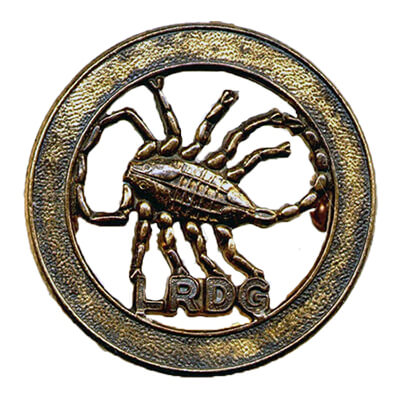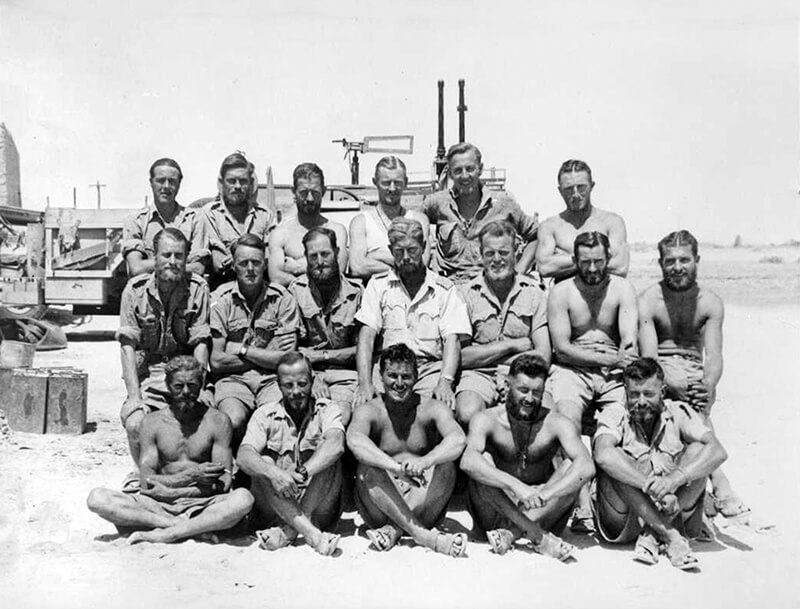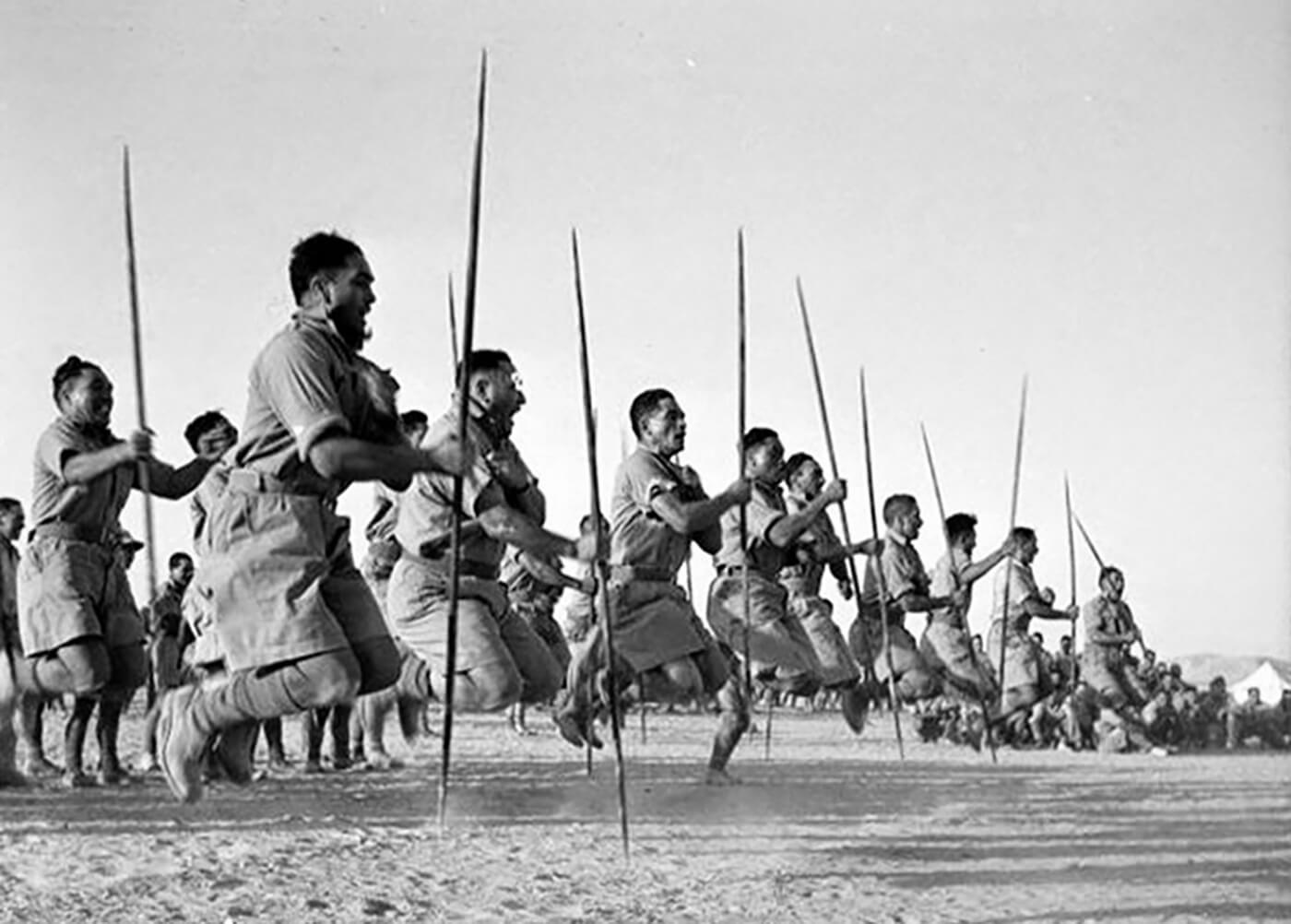Which Special Forces did New Zealand use during World War 2?
| Page Created |
| August 13th, 2024 |
| Last Updated |
| August 13th, 2024 |
| New Zealand |
 |
| Allied Countries |
| Australia Belgium China Canada Finland France Great Britain Greece India Italy Nepal New Zealand Norway Poland The Netherlands The Philippines The Soviet Union The United States Yugoslavia Inter-Allied |
| Small Units | |
| Long Range Desert Group |  |
| New Zealand Forces during World War 2 |
Despite being a small country with a relatively modest population, New Zealand made substantial contributions to the war effort, both in terms of military participation and support on the home front. As part of the British Commonwealth, New Zealand made a strong effort to support the Allied Forces in World War 2.
| Mobilisation and Composition of New Zealand Forces |
At the outbreak of the Second World War in September 1939, it was decided that New Zealand should provide an Expeditionary Force. Initially, a “Special Force” was to be raised, consisting of one battalion in each of the three military districts. However, the requirement was soon raised to that of a full division. Major-General Bernard C. Freyberg, a distinguished officer of the British Army with strong New Zealand connections, was appointed as General Officer Commanding. This force became known as the 2nd New Zealand Expeditionary Force (2NZEF), and the division was initially referred to as the New Zealand Division.
The 2nd New Zealand Expeditionary Force was mobilised in three echelons. The first echelon, comprising 2nd New Zealand Expeditionary Force Headquarters and the 4th Infantry Brigade, departed New Zealand in January 1940 and arrived in Egypt on February 12th, 1940. The second echelon, which included the 5th Infantry Brigade, was diverted to Britain after Italy entered the war, joining the British VII Corps and forming the 7th Brigade to bolster invasion defences. The third echelon, consisting of the 6th Infantry Brigade, reached Egypt on October 27th, 1940. The concentration of the division was completed when the second echelon, no longer required in Britain, arrived in Egypt the following March.
The 2nd New Zealand Division, under the command of Major General Bernard Freyberg, became one of the most distinguished fighting units of the war. The division was comprised of infantry, artillery, armoured, and engineering units, supported by medical, signals, and other essential services. New Zealand’s air and naval forces also played significant roles during the war, with the Royal New Zealand Air Force (RNZAF) expanding rapidly to provide vital air support in various campaigns, and the Royal New Zealand Navy (RNZN) contributing to the protection of Allied shipping lanes.
| New Zealanders in the Long Range Desert Group |

One of the most remarkable contributions of New Zealand forces to World War II was their involvement in the Long Range Desert Group (LRDG). Formed in 1940, the Long Range Desert Group was an elite reconnaissance and raiding unit that operated deep behind enemy lines in the North African desert. Its missions included gathering intelligence, conducting raids on enemy positions, and disrupting Axis supply lines, often in extremely challenging and hostile environments.
New Zealanders were among the earliest and most numerous volunteers for the Long Range Desert Group. Their experience and skills were well-suited to the harsh desert conditions, as many of them had grown up in rural areas and were accustomed to outdoor life, navigation, and survival in rugged terrains. The New Zealand contingent of the Long Range Desert Group was known for its toughness, resourcefulness, and ability to endure the extreme conditions of the desert.
New Zealanders in the Long Range Desert Group were involved in several critical operations throughout the North African Campaign. They conducted reconnaissance missions that provided vital intelligence for the Allied forces, often operating hundreds of miles behind enemy lines. Their ability to move quickly and quietly across the desert, combined with their expertise in navigation and vehicle maintenance, made them an invaluable asset to the British Eighth Army.
One of the most notable New Zealanders in the Long Range Desert Group was Major William “Bill” Kennedy Shaw, who served as the unit’s chief intelligence officer. Shaw’s leadership and expertise in desert warfare were instrumental in the success of many LRDG operations. The New Zealanders’ contributions to the LRDG’s effectiveness were widely recognised, and their service in this elite unit became a point of pride for the nation.
The Long Range Desert Group’s operations played a crucial role in the broader strategy of the North African Campaign and the Aegean Sea, helping to disrupt Axis communications and supply lines, which were essential to the eventual Allied victory in the region.
| Theatres of War: Europe and North Africa |
New Zealand forces were involved in several key campaigns during World War II, with the most notable being their participation in the European and North African theatres. The 2nd New Zealand Division first saw action in Greece in 1941, where they fought bravely against the advancing German forces. Despite their efforts, the campaign ended in a retreat, and many New Zealand soldiers were evacuated to Crete. There, the division was involved in the Battle of Crete, which saw fierce fighting and eventually resulted in a German victory. The battle, however, demonstrated the resilience and courage of New Zealand troops, earning them a reputation as formidable soldiers.
Following the defeat in Crete, the 2nd New Zealand Division was redeployed to North Africa, where they played a crucial role in the Western Desert Campaign. New Zealand forces were actively involved in several key battles, including the Siege of Tobruk and the First and Second Battles of El Alamein. The Second Battle of El Alamein, in particular, was a turning point in the North African Campaign, leading to the eventual defeat of Axis forces in the region. The New Zealanders’ contributions to these battles were significant, with their efforts helping to secure vital victories for the Allied forces.
After the successful conclusion of the North African Campaign, the 2nd New Zealand Division was transferred to Italy, where they participated in the Italian Campaign. They were involved in several major engagements, including the battles of Monte Cassino and the advance towards Rome. The fighting in Italy was gruelling and took a heavy toll on the division, but their determination and skill were instrumental in the eventual Allied victory in the region.
| The Pacific Theatre |
When Japan entered the war in December 1941, the New Zealand Government responded by raising another expeditionary force, known as the 2nd New Zealand Expeditionary Force in the Pacific. The 2nd New Zealand Expeditionary Force (I.P.), served with the Allied Pacific Ocean Areas command. This force supplemented the existing garrison troops in the South Pacific. The main fighting formation of the2nd New Zealand Expeditionary Force (I.P.) comprised the New Zealand 3rd Division.
The 3rd New Zealand Division, however, never fought as a complete formation; its component brigades became involved in semi-independent actions as part of the Allied forces in the Solomon Islands, notably in the battles at Vella Lavella, the Treasury Islands, and Green Island. The War Cabinet had decided to hold the division at two brigades instead of the standard three, which limited its effectiveness. Although General Douglas MacArthur had intended to use a full division, the limited strength of the 3rd Division meant that it could not fulfil this role. Admiral William Halsey expressed significant disappointment that New Zealand could not provide a division with three full brigades, but his deputy acknowledged that the division was last in New Zealand’s Pacific priorities, behind the air force, navy, and food production.
Despite these limitations, the New Zealand 3rd Division played an important role in the Pacific Theatre, contributing to the Allied efforts to check Japanese expansion and secure key victories in the region. The Royal New Zealand Navy and the Royal New Zealand Air Force also played crucial roles in the Pacific. The Royal New Zealand Air Force operated in the South Pacific, providing air cover, conducting reconnaissance missions, and supporting ground operations. Meanwhile, the Royal New Zealand Navy participated in naval engagements and convoy protection duties, ensuring the safe passage of Allied ships across the Pacific.
The involvement of New Zealand forces in the Pacific was critical to the overall Allied strategy in the region. Their contributions helped to stem the tide of Japanese aggression and secure key victories that were essential to the eventual success of the Allied campaign in the Pacific.
While New Zealand’s military forces were engaged on various fronts overseas, the home front played an equally important role in supporting the war effort. The war brought about significant changes in New Zealand society, as the entire nation mobilised to contribute to the Allied cause. The government implemented a range of measures to ensure the efficient use of resources, including rationing, increased agricultural production, and the expansion of industrial capacity.
New Zealand’s agricultural sector was particularly vital to the war effort, providing food supplies not only for the domestic population but also for the Allied forces overseas. The country’s farmers increased production of meat, dairy, and other essential foodstuffs, which were shipped to Britain and other Allied nations. This contribution was a key element of New Zealand’s support for the war, as it helped to sustain the Allied armies and civilian populations during the conflict.
The war also saw significant social changes within New Zealand. Women entered the workforce in greater numbers to fill the gaps left by men who had gone to fight overseas. This shift had lasting implications for gender roles and the labour market in the post-war period. Additionally, the war fostered a sense of national unity and identity, as New Zealanders from all walks of life came together to support the war effort.

